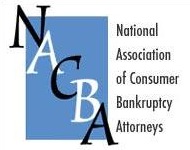The rookie bankruptcy lawyer called up to ask if the Chapter 13 plan had to provide the DMI amount in addition to the liquidation amount.
Whoa! That’s taking good faith to an extreme. These are two different measures of what unsecured creditors are entitled to under Chapter 13. Section 1325(a)(4) requires that creditors get at least what they would have gotten had the case been filed under Chapter 7.
A second provision, 1325(b)(1) provides that unsecured creditors get the debtor’s projected disposable income over the applicable commitment period.
How do these two tests relate to each other? They are alternatives, and the debtor must commit the greater of those two numbers to the payment of unsecured claims.
Note that both tests measure what “unsecured” creditors get. A priority claim is, by definition, an unsecured claim. So a plan driven by the disposable income calculation from the means test can pay the priority claims from that pot.
Likewise, the liquidation test, the test looking at what creditors would get in a Chapter 7 liquidation, fixes what unsecureds get.
So if there are secured claims to be paid through the plan, more money must be committed to pay secured claims and the costs of administration.
More
Image courtesy of freeaussiestock.com








